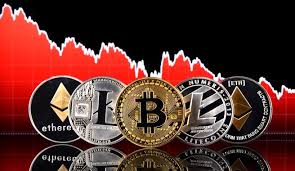
Mastering the Market: A Deep Dive into Crypto Trading Technical Tools
In the world of cryptocurrency trading, success is not only about having a keen sense of market trends but also leveraging various technical tools to make informed decisions. Understanding how to use these tools effectively can greatly enhance a trader’s ability to analyze the market and devise successful trading strategies. In this article, we will explore some of the most valuable technical tools for crypto trading, their functionalities, and how they can be implemented into your trading plan. For additional insights, feel free to Crypto Trading Technical Tools visit website.
What are Technical Tools in Crypto Trading?
Technical tools in crypto trading encompass a variety of software and instruments that assist traders in making decisions based on historical price data, volume trends, and various market indicators. These tools primarily focus on chart analysis, giving traders the ability to visualize market movements and patterns that can signal potential buy or sell opportunities.
Charting Software
Charting software is an essential tool for any crypto trader. It allows users to visualize price movements over time and apply various indicators to those charts. Popular platforms like TradingView and Coinigy offer advanced features such as customization options, multiple chart types, and integration with various exchanges for real-time data. By utilizing charting software, traders can identify trends, support and resistance levels, and potential reversals in the market.
Price Action Trading

Price action trading involves analyzing the movement of prices over time to make trading decisions. This method does not rely on indicators but instead focuses solely on the historical price movements of a cryptocurrency. Techniques such as candlestick patterns, trend lines, and chart patterns come into play here. Traders who use price action often have a keen eye for understanding market sentiment based on price changes.
Technical Indicators
Technical indicators are mathematical calculations based on the price, volume, or open interest of a security. They provide insights into market conditions and help traders identify trends and potential reversals. Some popular technical indicators include:
- Moving Averages (MA): Helps smooth out price action and identify trends. Common types are the Simple Moving Average (SMA) and Exponential Moving Average (EMA).
- Relative Strength Index (RSI): A measure of the speed and change of price movements that helps identify overbought or oversold conditions within a market.
- Bollinger Bands: Comprises a middle band (SMA) and two outer bands that indicate volatility levels and potential price extremes.
- MACD (Moving Average Convergence Divergence): Used to identify momentum and trend direction, particularly helpful for spotting potential buy and sell signals.
Volume Analysis
Volume is a key aspect of technical analysis that measures the number of coins traded within a certain period. Understanding volume trends helps traders confirm potential price movements and validate patterns. For instance, if a price increase is accompanied by high trading volume, it may indicate a strong uptrend. Conversely, low volume during a price increase may signal a lack of conviction, leaving the potential for reversal.
Order Book and Depth Charts

The order book records all buy and sell orders for a particular cryptocurrency, showcasing the supply and demand at various price levels. Depth charts visually display the order book, offering insights into market sentiment. Analyzing the order book can also help traders anticipate price changes based on overwhelming buy or sell orders at specific levels.
Automated Trading Tools
With the advancement of technology, many traders have turned to automated trading tools and bots to execute trades on their behalf. These tools can be programmed to buy or sell cryptocurrencies based on predefined criteria or indicators. While they can save time and remove emotional decision-making from trading, it’s crucial for traders to monitor automated systems regularly to ensure they align with the trader’s overall strategy and market conditions.
Risk Management Tools
Effective risk management is critical in crypto trading. Tools that help manage risk include stop-loss orders, take-profit orders, and position sizing calculators. Stop-loss orders automatically sell a position when it reaches a certain price, minimizing potential losses. Take-profit orders do the opposite by locking in profits when assets reach a particular value. Position sizing calculators help determine how much capital to risk on each trade based on account size and risk tolerance.
Conclusion
Technical tools are indispensable for crypto traders seeking to navigate the complexities of the market. From charting software and technical indicators to risk management tools, the right combination can significantly enhance a trader’s effectiveness. Understanding how to leverage these tools not only helps in making informed decisions but also builds confidence in trading strategies. As the crypto market continues to evolve, staying updated on the latest tools and techniques will empower traders to seek greater success in their endeavors.
